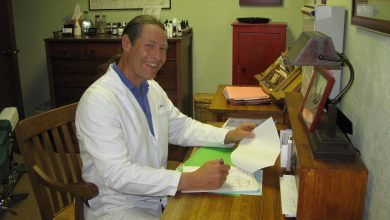Sports Car Solutions – Expert Restoration & Repair
There are only a few people in the world who can say they have worked on a Porsche 959. And there are only a few more who can say they have worked on a Dodge Dart SS Hemi racer… or a Morris Minor or an Alfa Romeo Giulia. But Dan Buckley has done all of this and more with over 40 years of experience. And he still loves it! If you are a car enthusiast, read on. If you have a classic car sitting in your garage waiting for repair, or if you had it on your bucket list to finally buy that car you’ve always wanted, then you don’t want to miss this interview!
 Dan, hello and welcome to the LocalsGuide. Thank you very much for speaking with us today and for sharing this interview with the community.
Dan, hello and welcome to the LocalsGuide. Thank you very much for speaking with us today and for sharing this interview with the community.
Thanks. I’m very happy to be featured and have this opportunity to talk with you and all those out there with dreams of driving their own classic or sports car soon.
 Yes, I am excited in using the LocalsGuide to help support you in telling your story. I am also pleased to help introduce and promote your business to the community of classic car repair and restoration.
Yes, I am excited in using the LocalsGuide to help support you in telling your story. I am also pleased to help introduce and promote your business to the community of classic car repair and restoration.
Yes. You know I see and hear about cool classic cars and sports cars sitting, waiting to be enjoyed again. That’s why I’m excited to do this interview, because I know there are people out there who would love to be driving their partially done car, rather than just looking at it. From the guy who just needs a little technical help, or someone who needs help but can do some of the work, to those who need someone with the ability to take a project from start to finish and deliver their dreams. Like the one fellow who called me and said he had a project he started on 12 years ago, loves the car, drove it as a young man and needs someone to put it back together to a point he can take over. We got that done and I saw him driving the car, with his wife, in last summers Fathers Day Cruise in Medford. Their smiles were too big for the car. It was a 1969 VW Bug.
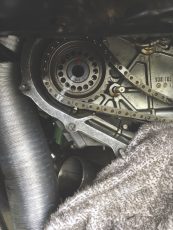 Dan, your relationship with cars and mechanics began when you were five years old. Take us back to when you were first introduced to this fascinating world.
Dan, your relationship with cars and mechanics began when you were five years old. Take us back to when you were first introduced to this fascinating world.
I remember when I was around 5 or 6 years old, down the street from my house lived an ex-war mechanic. Let’s see that must have been around 1955. And he would let me hang around and fetch tools or step on the starter button of a Cat diesel he was testing and that was fun for me. I still remember him bending shifter rods for the local hot rodders so they would curve over the seat, or hot wiring a 28 Ford roadster to get it started. I’ve always been fascinated and attracted to cars.
One moment that has stuck with me throughout my life was this race between an Austin Healy and another car, tearing down the street towards the beach and being chased after by the country clerk who was my neighbor. I can still remember the exact color of his ‘58 Chevy Impala – aqua blue. That race was my first realization that you could race cars – and that made me want a Healy.
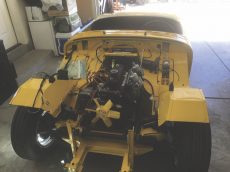 When you were fifteen years old your family moved to Scotland and this is when you got your first job in auto mechanics.
When you were fifteen years old your family moved to Scotland and this is when you got your first job in auto mechanics.
After returning to the U.S. from Scotland, now at age18, I finally could get my drivers license and I don’t remember having any trouble passing those tests. Well, now I had to get my own car and I found a 1962 Jaguar MKII sedan with an XK 120 3.8 L engine. $200 drove it home and I started working on it. I rebuilt lots of the car, went off to college, and that car sat for a couple years for lack of time and money, mostly money. Then came the ‘55 and ‘57 Chevys. But I really wanted a sports car, so I found an Austin Healey Sprite and had fun with that for a while. Then Midgets, MGB’s.
 Eventually you decided to have a career in auto mechanics and ended up really finding a great mentor who pushed you into some excellent opportunities.
Eventually you decided to have a career in auto mechanics and ended up really finding a great mentor who pushed you into some excellent opportunities.
Up until the time I was about 30 years old, I had worked on cars in various shops and worked on my own cars, but I had never really decided to be a professional. Then I got married. And I realized that I had to do something with my life. I searched inside of myself to find what I liked to do best, and it turned out to be auto mechanics. So, I started looking around for a job, and found an ad in the paper for a Toyota/BMW dealership in Providence, Rhode Island. I didn’t have the number of years of experience to make me qualified for the job, but I did have one thing the ad required – I must be willing to be trained. So, I went to the dealership and talked to the service manager and pointed this out to him, and I said, “that’s me.” I told him that I was either going to go to automotive tradeshop school or get a job in a place like his. He said he had been a tradeshop school teacher and that they would teach me the rudiments. But, since I already knew them, I should come to work for him and he would send me to factory schools. So I did! I started working on Toyotas at the dealership, and sometimes I would forget to do some little thing after I did the tune up, and I would always go to the service manager and make sure that it got done. I think that attitude won me a position on the BMW line. Now, I started going to BMW factory schools where they taught me all the in-depth knowledge necessary to repair their cars. And that is the basic knowledge that serves me to this day. And that’s where I acquired the skills with my tools because we worked flat-rate so we had to be accurate and fast.
If the car came back because you did it wrong, nobody is paying you to fix it.
This helped me become familiar with all the systems and how they work. A few years later, I moved to Iowa and opened my own business where I fixed whatever came in front of me – Alfa Romeos, Hondas, BMWs, Volvos, Peugeots, Sabs, VWs, Audis, Mercedis, Jaguars, Harleys, MGs – for the next 15 years. The opportunity that the BMW dealership offered me to learn how to work on higher end cars with good supervision built my confidence and skills so that I could take off on my own.
 I think from what you are saying is that it really takes a unique type of person who is willing to throw themselves into such challenges and commitments.
I think from what you are saying is that it really takes a unique type of person who is willing to throw themselves into such challenges and commitments.
Yes, and that person is still the one that is willing to be trained, because every difficult job, every opportunity is a learning experience. At one point in my career, I discovered an opportunity to work in a shop in California that produced very high-level exotic cars. The one that I became intimately associated with was the Porsche 959, at that time, it was a half a million dollar car. In an environment like that exactness and attention to detail is a must. You can’t deliver a half a million dollar car that has problems.
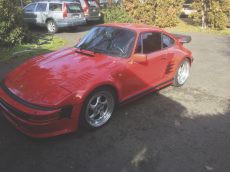 This sounds a lot like being a professional athlete.
This sounds a lot like being a professional athlete.
Yes, it is because a professional athlete needs to constantly work at improving their game. And the top technicians that I know who work on Ferraris or Lamborghinis or Porsches need to do the same thing. And restorers like myself have to combine all of the skills in one package so we can meet the expectations of our clients. The way that I give value for their money is by maintaining high standards of quality. Often times, I give the customer more than they asked for. They might just want it to work, and so do I, but I also want it to look good. Like my friend who owns the Alfa Romeo Guilia Spider, who is now proud to show off his car after I refurbished his engine compartment and fixed his transmission. So when the client comes to pick up their car, it looks like what their dream looks like. That’s what a restoration is to me. I restore the cars and it restores the dream. For that, you have to be careful and meticulous and artistic.
 Dan, you mention that many of your customer simply enjoy talking with you and learning about their cars.
Dan, you mention that many of your customer simply enjoy talking with you and learning about their cars.
It’s always exciting to see a car that someone has had and wants to restore, and one of the first things that I do is get them to tell me their story and why they want this car. This leads me to understand the level of restoration they are looking for. And in the process, we get into a conversation about the car which is the connection we both have. And so, we look the car over together and talk about the different details, what might have been done here, what might’ve changed there, how it’s supposed to be, and that ends up in us talking about how correct a restoration they want. Do they want it to look all original on the outside, but it could be upgraded mechanically? Do they want it nut and bolt correct, show-winning car? Different levels require different amounts of time and money. And then I explain to them what each level takes and at that point we make an agreement about what kind of work will be done and what the possible cost could be. After that the research starts so we can make it correct. Is this car what they really think it is? What do the VIN numbers tell us? If we compared it to other correct examples, would everything be there? Sometimes I have two or three projects going on at the same time, so it is essential that the research guides me in the direction of how to make the car correct so I don’t waste the customer’s time and money. For instance, one of my clients brought a car to me they thought was a 1960 Morris Traveler, but was actually from 1959 with a 1965 MG Midget engine. It still looked pretty much all original, but went faster. So we upgraded the mechanicals by cleaning up the wiring and adding an alternator and fixing some other things that made it fun and safer to drive because now the lights were brighter.
The research I did on this car allowed me to get all the right parts and correct any prior mistakes to make it the perfect car, such as the correct wiper transmissions and wiper arms.
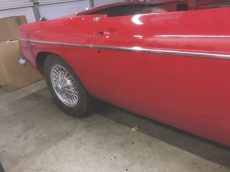 What are some of the key considerations customers need to make when choosing to restore a car?
What are some of the key considerations customers need to make when choosing to restore a car?
Key considerations customers need to make when they are restoring a car are: am I doing this for the money or am I doing this because I love the car? They are not necessarily exclusive, but generally one takes precedence over the other. For instance, the person who wants to restore a car because they had one in high school or their parents had one or it was the first one they bought when they got married would come under the sentimentalist category. And this is usually a person who wants the car and wants to keep it for a long time because of the memories it brings back and the good feelings they have from those memories.This person generally wants a cosmetic restoration and decent mechanicals, and because of that cost and what gets restored are of major concern, so the majority of the money gets spent on the interior and the body and not so much the little details under the hood that cost money but aren’t necessary to replace. Another type of person who restores cars would be considered an enthusiast and usually they restore cars that they have also always wanted, although not necessarily from a sentimental point of view. And these people are generally the ones you see driving their car while it is in the process of being restored. Which is great, because they generally tend to use their car a lot. And they will either sell it later for a profit or trade it for another car that they then work on in the same manner. The enthusiast is usually pretty self-sufficient because you have to know a lot about cars to repair your own and drive it. So they are price conscious and value conscious. They know what the car is worth and what they have in it pretty much all the time. And for these people, I offer technical assistance services, doing some more of the involved work that they either don’t have the knowledge or the tools for. Then we come to the third category of gearheads, the collector.
The collector is usually the kind of person who wants many more than one car at a time, doesn’t drive any of them very much, and keeps them in excellent to pristine condition. Why? Because collector cars are usually the valuable ones. And in this category, the value of the car over time is an important consideration.
In this category is where we find most of the absolute correct nut-and-bolt restorations. For collectors, the cars need to be at the highest level possible so that they can maintain their value and not need work down the road when the collector wants to sell the car. And there’s a kind of joy that comes in knowing that everything about your car has been cleaned, repaired, corrected, rebuilt, and works. These are generally the people who spend the most on their cars.
 Dan I really love how you have identified your key customers.
Dan I really love how you have identified your key customers.
The landscape is rife with unfinished projects and there are a number of reasons why projects go unfinished and why unfinished projects are a valuable resource for someone wanting a project. In the first instance, I think the main reason projects go unfinished is the length of time it takes to do the project. As kids, many of us made models of all types which took a few days. But the reality of a car project is, most of them take eight months to a year of everyday work. Most people can’t spend all day, every day for a year working on their car. So the time gets stretched out to four or five years, and in the process life happens. Which brings us to the second reason people generally don’t finish their project. They didn’t have enough money at the outset to do the whole thing. When we try to buy wheels one month and interior parts another month and engine parts another month, etc, somewhere in there the water heater breaks or a medical bill comes up and we have to spend the money we had planned on spending on our project for our living comfort.
So those two reasons are the main killers of car project. And because of that, they never fulfil their dream. That’s where I come in. Because I’ve worked on so many cars, I can see the finish line before I start and that helps everyone reach the goal. On the other hand, a person who wants to find a car project is benefited from this situation in that these unfinished projects all over the country are sold for pennies on the dollar just to get them out of the garage. So, a lot of the hard work or parts acquisitions have already taken place and now it just needs assembly, paint, and love.
Dan, two key qualities I see that you exhibit is a great attention to detail and then a strong commitment to finishing.
Well, throughout the history of car restorations, many, many, many projects go unfinished due to lack of skill, time, or money. One of my clients owned a 1965 Porsche which had been in someone else’s hands for over ten years. And after over $10,000 invested in the car, it was the mess you see in the pictures. But this man loved this car and had a commitment to seeing it put back together as close to original as possible given his financial constraints. Not everything was replaced or restored, but after eight months of continuous work the car was delivered as you see it. And he still has it. So many of the parts were ruined from sitting outside for nearly ten years that we had to go find all the pieces to put the car back together. And fortunately for him, the engine and transmission were still in good shape and just needed cleaning up so I could focus on the body, interior, and detail restoration to put the car back on the road in excellent condition. For many people, it’s tough to understand what they are getting involved in because if you were to take every piece of your car and lay it out on the floor of your garage it would be mind-boggling. That’s where my experience helps, just knowing where to start. And once you know where to start, you can organize the rest in sequence so that the project can be finished.
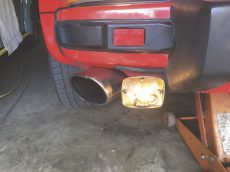 You have been called an excellent problem solver.
You have been called an excellent problem solver.
I think this is what we talked about earlier about great athletes. Great athletes find and solve the problems that keep them from being great champions. I relish the challenge of solving the problems and making these cards great again. And that often means that I spend many hours after work researching and learning about the particular car I’m working on.
One of the qualities that allows me to be good at this profession is that I will do whatever it takes to find the answer to the problem so the car leaves my shop correct.
You mention that working on cars is an honor and a privlidege.
Well sure. People don’t have to let me touch their car. They don’t have to leave their dreams in my hands. That’s why it’s a privilege. They let me into their dream to help them create it. Oftentimes that’s a private world. That’s why it’s a privilege.
Dan, you have a saying that you like to share. “Fix it in the winter and drive it all summer long.” Say more.
In colder climates, such as in northern states or New England where people store their cars away for the winter, it’s common to find people working on their car all winter in their heated garages so they can drive it in the summer. So the mentality is, work on the car in the winter so that you can enjoy it all summer. But I find in this area of the country, where the weather doesn’t get so bitter, people are able to drive their cars throughout much more of the year. So we don’t find that kind of winter restoration work going on as much. Because people here don’t store their car away for the winter, they don’t do the rebuilding and restoration work as often. So many cars are in an unfinished or unrestored state.
Dan please give us an overview of the services you are currently offering.
I offer tune-ups, regular maintenance, component rebuilding like carburetors, engines, transmissions, cooling systems, suspension modifications, interior refurbishments, all the way up to total restorations.
 Over the years you have received some great testimonials. Would you mind sharing a few with us today?
Over the years you have received some great testimonials. Would you mind sharing a few with us today?
“I worked side by side with Dan for 3 years. He has the highest of standards and is a perfectionist in all he does. His attention to detail is surpassed only by his integrity of doing every job with honesty and quality. He is truly a Master at what he does and always goes far above and beyond to accommodate his clients, both with fair pricing, as well as the highest level of work. He solved my car issues when others couldn’t.” – Jeff M
“Simply stated, Dan Buckley is an amazing auto mechanic. It was serendipitous that we found him when we were looking for someone to work on our 1959 Morris Minor Traveller. He took real joy in working on our car both because the Morris Minor was the first car he worked on as a kid and because he takes real pride, interest and joy in working on all vehicles.”- Lance H & Carol P
You have also been hired to work on private collections. Please say more.
When I moved to the Rogue Valley from Santa Cruz, I met a couple who had a car collection and an airplane collection and the means to make that collection grow. So there were between ten and fifteen cars in the collection, some of which were already built and some were waiting to be worked on. And over the course of the next four years, we built quite a few cars. A 1963 Dodge Polara drag car, a 1968 Dodge Dart Hemi SS clone, a 1964 Falcon Futura convertible with a 260 engine, and maintained and upgraded the rest of the collection. When that gentleman passed away, I transfered my attention to helping their son build his racing career. So instead of building a car collection, I started building full on race cars for the purpose of rally racing and drifting. And we made it to the pros.
What was the most challenging aspect of working on the race team cars?
Well there are two really challenging aspects of a race team. One – always making the race deadline, which is not always possible. And two, coming up with new and better ways to make the car perform better. And another aspect of managing a race team, is of course, the personalities. Getting everyone on board, going in the same direction, and finding people with really good skills so that each area of the race team is handled and can be counted on.
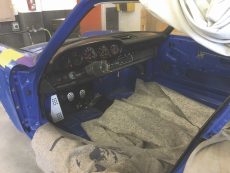 Dan, tell us about your own dream car.
Dan, tell us about your own dream car.
My own dream car is a 1974 Alfa Romero GTV 2-litre completely race-tuned and set up, but street functional. I owned that car. My wife and I went on our honeymoon in it. The car came to me because a friend of mine was in California and saw the car for sale for $1500. So my business partner bought the car and he drove it home from California to Iowa. Now, this was before cell phones, so I never got to look at the car and when it arrived, it had bent sheet metal in the nose.
It had a coolant leak and was very low on coolant, and a bunch of the oil had leaked out. But there it was. And at the end of that year, when my partner and I split up the profits in our business, he made sure that I acquired that car as part of my profit because he couldn’t see any value in it. That $1500 car is worth over $40,000 now. So, I took the car and rebuilt the whole thing to my specifications and boy could she go. I eventually sold it to my friend for his collection. They rarely use the car and I wish I could get it back.
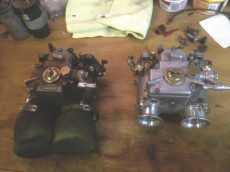 Dan, often times you are having to fix and repair car without the original tools. Please talk more about this challenge.
Dan, often times you are having to fix and repair car without the original tools. Please talk more about this challenge.
What I meant by that was parts of cars are assembled with special tools at the factory which are often expensive to buy or unavailable. And so, oftentimes, you have to buy a complete assembly to fix something that is wrong on a car instead of being able to repair the problem. So all of us in the automotive repair world have learned to create and fabricate tools to do the job. For example, one tool that I own that I created removes and installs MGB lower control arm bushings easily without damaging them.
What would you say the biggest challenge is in restoring a car?
After all the planning and work and effort that goes into restoring all the parts, now you have to put them together without damaging anything or scratching that $35,000 paint job.
 Many of our readers are probably wondering how you might be able to help them with their projects.
Many of our readers are probably wondering how you might be able to help them with their projects.
I can help them from advice about where to buy parts, technical solutions to figuring out what’s wrong with their car, what needs to be done, or organizing a complete restoration. All they have to do is call me.
Dan, are you helping individuals scout out and buy classic cars as well?
That is not something that I have done much of, because it is very time consuming and hasn’t been the focus of my business. But if someone finds a car, I would be happy to discuss it with them. I would also be willing to locate and help purchase a car as part of a complete restoration agreement. In other words, you need someone to find the car that you want to have restored and then restore it for you.
 Dan are there any last thoughts or comments you would like to share here today?
Dan are there any last thoughts or comments you would like to share here today?
The more of us who know where people like us are, the better off we would be. Like Bob, hidden out in Eagle Point who does nothing but MGs, and they guys who restore one Porsche at a time in their garage. Or the Ford guys or the Chevy guys. There’s lots of car enthusiasts out there who don’t know who the other car enthusiasts out there are, and getting to know each other would probably help all us keep our dreams alive.
Learn More:
Dan Buckley
Sports Car Solutions
290 Mobile Drive
Ashland, OR
541-324-0166
“Sports Car Solutions” on FaceBook


